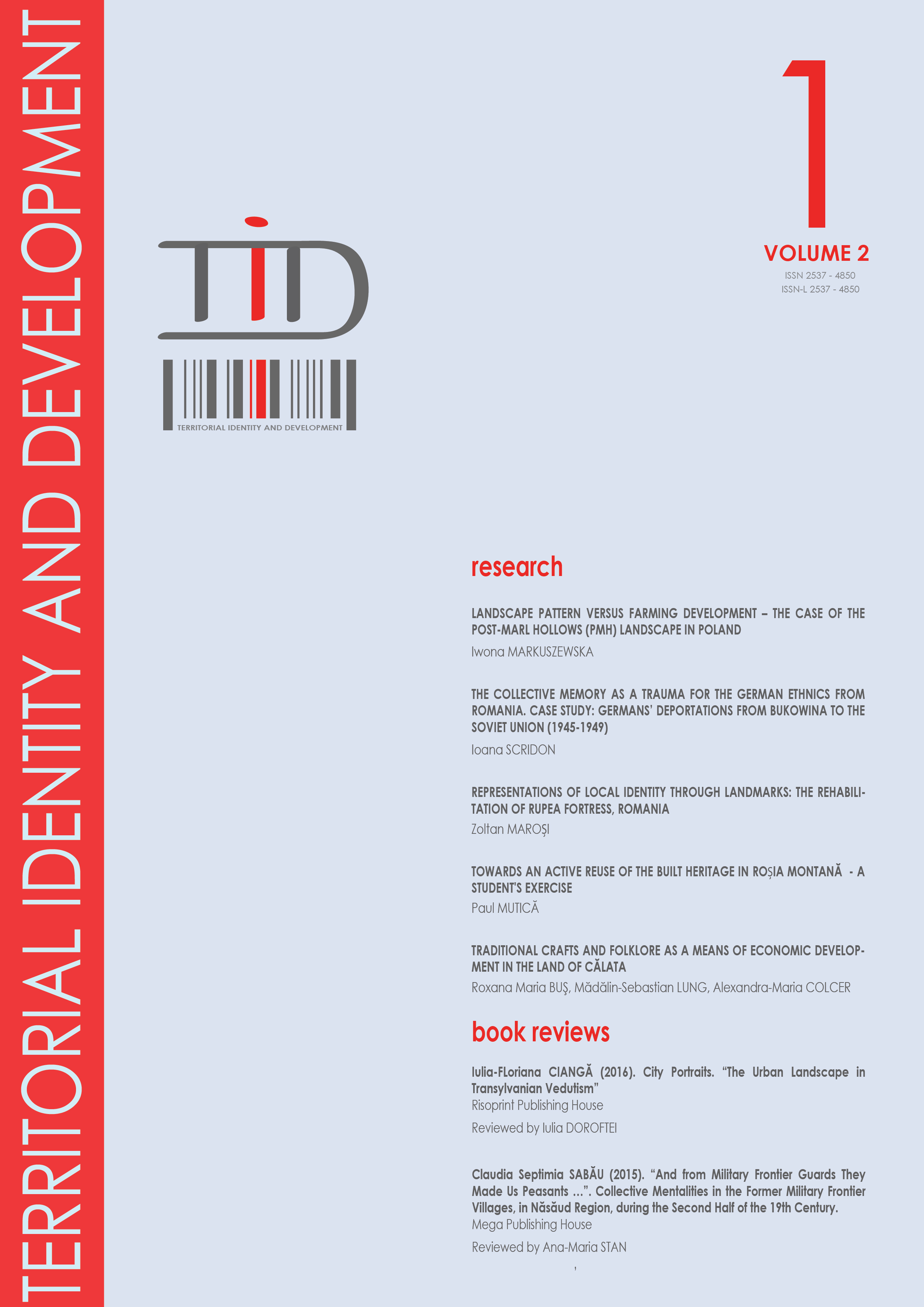LANDSCAPE PATTERN VERSUS FARMING DEVELOPMENT. THE CASE OF THE POST-MARL HOLLOWS (PMH) LANDSCAPE IN POLAND
LANDSCAPE PATTERN VERSUS FARMING DEVELOPMENT. THE CASE OF THE POST-MARL HOLLOWS (PMH) LANDSCAPE IN POLAND
Author(s): Iwona MARKUSZEWSKASubject(s): Geography, Regional studies
Published by: Universitatea Babeş-Bolyai
Keywords: post - marl hollows (PMH); agricultural landscape; landscape pattern; human - nature relationships; pro - environmental behaviour; place attachment;
Summary/Abstract: This article discusses the presence of unique landscape elements (post-marl hollows) in an intensively operated farming region. The selected case study (the environs of Krotoszyn in the Wielkopolska region, Poland) represents an example of a human-designed landscape in which post-marl hollows (PMH) were created as a consequence of the soil-marling process. PMH are vital ecological habitats which have an influence on the high quality of the rural landscape. Currently, as PMH are undergoing the vanishing process, it seems essential to find a solution to maintain these unique landscape elements. The main aim of this paper is to analyse human-nature relationships during the current changes taking place in the agricultural landscape in order to get the answer to the question: how is this affecting the PMH? The study evaluates farmers’ pro-environmental behaviour and defines their identity with the local landscape that has been beneficial in predicting the forthcoming shaping of the landscape. The data describing the PMH were collected in the years 1998-2016, while conducting cartographic analysis, a literature review and repetitive field research. Additionally, remote sensing and geoportal database were used to analyse the PMH changes. Also, interviews and discussions with farmers and representatives of the local administrative body were conducted. Results indicated that local rural communities are little concerned about the environment, particularly when it pertains to the issue of conservation of the local landscape heritage (i.e. PMH). In addition, the lack of support from the administrative body makes more difficult the opportunity to maintain a unique landscape pattern, as described in this paper.
Journal: Territorial Identity and Development
- Issue Year: 2/2017
- Issue No: 1
- Page Range: 5-17
- Page Count: 12
- Language: English

